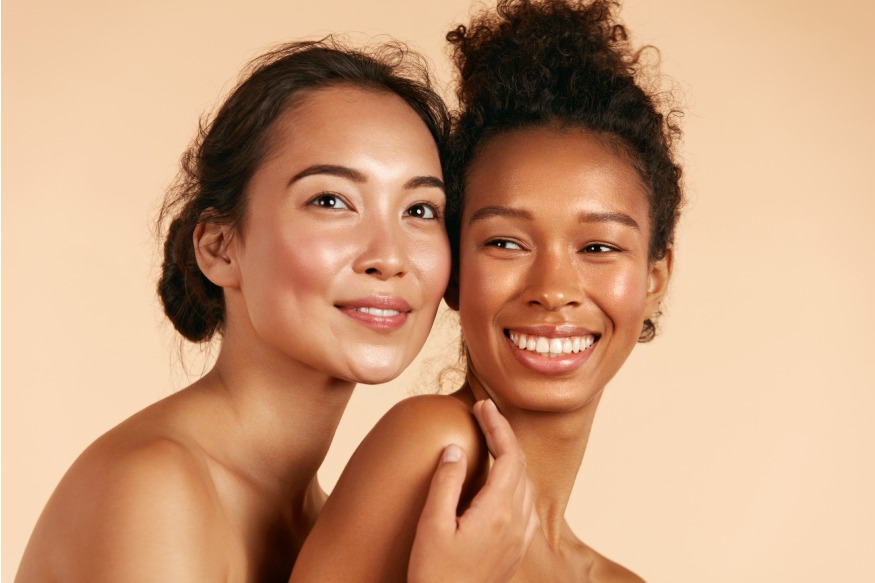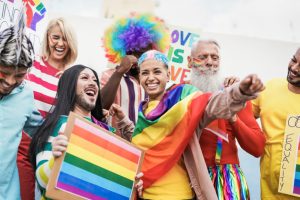
(extra)ORDINARY: Let’s celebrate everybody!

Let’s celebrate everybody! At Pabo, September is all about the (extra)ORDINARY. What do we mean by that? That everything and everyone is com-plete-ly normal. It doesn’t matter what you look like, what your sexual preference is, or which gender box you tick. You are who you are, and that’s A-OK!
Why celebrate the (extra)ORDINARY?
Not too long ago, discussions about sexual preference or gender identity were simply not done. Society hinged on the presumption of a dominant hetero and cis-gendered norm. And anything that deviated from the norm was supposed to stay locked away in a closet of shame. Luckily, those times are largely over. And though stigmatisation can sometimes still happen, we’re also increasingly willing to stand up for ourselves.
It’s becoming easier and easier to talk freely, to ask questions, and to find and support each other. Where bisexuality, gender fluidity and fetishism used to be taboo, we can now speak openly. And people are starting to see themselves and their stories depicted in newspaper articles, television programmes and hashtags.
The times, they are a-changin’. And we want to be a part of it!
The (extra)ORDINARY has always been very normal
The presence of more than just the cis-gendered straight man or woman may seem like a modern concept, but gender fluidity has long existed, and has even been considered completely normal and acceptable in some societies for centuries.
Gender as a spectrum
In fact, in many different cultures, gender is viewed as a spectrum, with many colours and variations. Take the Zuni, for example. This Native American people from modern-day New Mexico believe that gender is something you take on in the course of your life as opposed to something that’s determined at birth. And children who do not identify as either man or woman are known as ‘lhamana’: a gifted group that can travel spiritually between male and female souls.
Similarly, the Zapotec cultures of southern Mexico also recognize a ‘third gender.’ These are men who are not so much born in the wrong body, but who are attracted to feminine tasks and will therefore dress and behave in ways otherwise associated with women. These ‘muxes’ have existed for centuries and even survived Catholic rule.
Non-gender-specific language
More examples can be found with the Navajos in North America, who recognize four different genders, and the Buginese in South Sulawesi, who recognise no fewer than five. In Kenya and Tanzania, the term ‘mashoga’ refers to biological men who adopt the female gender and therefore serve a crucial role in wedding ceremonies. And in Madagascar, the gender-crossing ‘sekrata’ are believed to have supernatural protection which punishes anyone who attempts to do them harm.
In some parts of the world, gender fluidity can also be found in language. Where the use of the nonbinary pronoun ‘they’ has stirred much debate in western culture, other cultures have long been accustomed to a genderless language, having no distinctions of grammatical gender. An example of this is Yoruba, a language spoken in West Africa, which makes no distinction between male and female pronouns.

From gender spectrum to binary thinking
So, yeah. What exactly happened to the idea of gender as a spectrum? Why do we constantly have to challenge the prevalence of heteronormativity? After all, a rigid distinction between men and women has never been as clear-cut as it’s made out to be. Not even in our Christian-infused western culture. Although depictions of Adam and Eve tend to be very white, hetero and cis-gendered (with the woman incidentally commonly being depicted as having been created from the man), it has to be said that nonbinary thinking was not a completely alien concept. In fact, Jesus was sometimes depicted with breasts to represent a maternal character.
Animalistic and exotic
Unfortunately, after the Middle Ages, such representations soon came to an end. Europeans went out into the world, encountered other cultures and developed a concept of what a ‘civilised’ people should look like. The idea of gender as a spectrum was quickly stifled. And the ‘other’ became something so horrifying that it was to be feared and oppressed.
Black women were dubbed animalistic and exotic. They were exhibited in human zoos and their genitalia placed in nitric acid. Everything and anyone that deviated from the white, cis-gendered and heteronormative norm was ridiculed and discriminated against. And this phenomenon has left its traces to this day.

Gender in the blender
Of course, emancipation movements have starting popping up like mushrooms. And people are increasingly asserting their right to be who they are. But binary thinking still prevails in large parts of the world. Many still fear anything that deviates from the constructed norm.
Because let’s be real, not everything fits into neatly defined boxes.
Being attracted to the same sex, getting turned on by a shoe, or not identifying as either a man or a woman is not something we’re taught. It’s not a phase or affectation, and we shouldn’t condemn it as such. If that’s how somebody feels, then we should just accept it. It’s as simple as that.
So don’t measure yourself against another. The only standard you have to meet is your own. Are you happy with who you are? Then who cares what others think? Let’s stop pigeonholing and just embrace the colourful spectrum of who we are. Let’s throw gender in the blender and remember that we’re all human beings. And that we each have the right to a rich, loving and free life.
Let’s celebrate everybody!








Respond or ask a question
0 comments